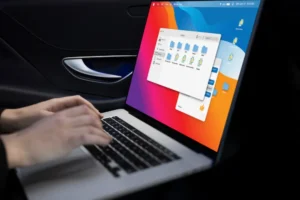In today’s rapidly evolving business and IT landscapes, organisations are constantly seeking ways to optimise their operations, manage costs effectively, and ensure accountability across departments. Additionally, use of a chargeback system – a powerful tool has become increasingly relevant in modern financial management and IT service management.
Chargeback systems play a critical role in promoting cost transparency and resource optimisation. By allocating costs to specific departments or services, these systems provide a clear picture of resource consumption, enabling organisations to make informed decisions about their IT investments and operational expenditures.
In this comprehensive blog post, we’ll explore the world of chargeback systems, covering everything from their basic concepts to implementation strategies and the benefits they offer. We’ll delve into various types of chargeback systems, discuss best practices for implementation, and examine real-world examples of successful deployments.
What is an IT Chargeback System?
At its core, a chargeback system is a financial management tool that allows organisations to allocate the costs of IT services, resources, and other shared services to the specific departments or business units that consume them. This approach transforms IT and shared services from cost centres into service providers, promoting accountability and encouraging efficient resource utilisation.
The concept of chargebacks isn’t new, but it has evolved significantly with the advent of cloud computing. Historically, organisations have used manual methods to track and allocate costs, often relying on spreadsheets and basic accounting practices. However, as businesses have grown more complex and technology-dependent, chargeback systems have evolved to become more sophisticated, automated, and integrated with other enterprise systems.
In modern implementations, chargeback systems leverage advanced software solutions, real-time data collection, and complex algorithms to track resource usage and assign costs accurately. This evolution has made chargeback systems an indispensable tool for organisations seeking to optimise their IT spending and promote a culture of financial responsibility.
What is the difference between Chargeback and Showback?
Chargeback is an accounting strategy which involves billing departments or business units for their actual usage of services and resources, making them financially accountable for their consumption. In contrast, Showback reports the usage and associated costs to the departments without actual billing, offering transparency and insights into resource utilisation without financial transactions.
Ready to optimise your IT spending with a chargeback system? Contact our experts today for a personalised consultation.
Types of Chargeback Systems
Chargeback systems come in various forms, each with its own strengths and ideal use cases. Let’s explore the four main types:
1. Fixed Rate Chargeback System
In a fixed rate system, services are charged at a predetermined, flat rate regardless of actual usage. For example, a company might charge each department a fixed monthly fee for email services based on the number of user accounts, regardless of how much each user actually uses the email system.
Pros:
- Simple to implement and understand
- Predictable costs for both IT and business units
- Reduced administrative overhead
Cons:
- May not accurately reflect actual resource consumption
- Can lead to overcharging or undercharging departments
- Provides less incentive for efficient resource use
2. Variable Rate Chargeback System
Variable rate systems charge based on actual usage of resources or services. For instance, a department might be charged based on the amount of data storage they use or the number of help desk tickets they submit.
Pros:
- More accurate reflection of actual resource consumption
- Encourages efficient use of resources
- Provides detailed insights into usage patterns
Cons:
- More complex to implement and manage
- Can lead to unpredictable costs for business units
- Requires sophisticated tracking and measurement systems
3. Direct Cost Chargeback System
This system charges departments for the direct costs associated with the services they use, including hardware, software licenses, and support staff time.
Pros:
- Highly transparent and easy to justify
- Directly ties costs to specific services or resources
- Helps identify the actual cost of providing services
Cons:
- May not account for overhead or shared costs
- Can be complex to calculate and allocate accurately
- Might not capture all aspects of service delivery
4. Hybrid Chargeback System
A hybrid system combines elements of two or more of the above approaches. For example, an organisation might use a fixed rate for essential services and a variable rate for additional resource consumption.
Pros:
- Offers flexibility to tailor the system to organisational needs
- Can balance simplicity with accuracy
- Allows for a more nuanced approach to cost allocation
Cons:
- Can be more complex to design and implement
- Might be more challenging for users to understand
- Requires careful planning to avoid inconsistencies
Unsure which chargeback system is suitable for your organisation? Reach out to us for guidance tailored to your specific needs.
Implementation of a Chargeback System
The Chargeback Implementation system requires careful planning, execution, and ongoing management. Let’s break down the steps into critical phases:
1. Planning and Analysis
- Assessing the Need: Before implementing a chargeback system, it’s essential to understand why it’s necessary. This involves analysing current cost allocation methods, identifying inefficiencies, and determining how a chargeback model aligns with organisational goals.
- Setting Goals and Objectives: Clearly define what you want to achieve with the effective chargeback strategy. Objectives might include improving cost transparency, encouraging responsible resource use, or enhancing budgeting accuracy.
- Identifying Cost Drivers and Metrics: Determine which factors drive costs in your organisation and what metrics you’ll use to measure and allocate these costs. This might include server utilisation, storage consumption, or application usage statistics.
2. Design and Development
- Choosing the Right Type: Based on your analysis, select the chargeback system that best suits your organisation’s needs. Consider factors like complexity, accuracy requirements, and organisational culture.
- Developing a Pricing Model: Create a pricing structure that accurately reflects the cost of providing services while also being fair and understandable to business units.
- Creating Policies and Guidelines: Establish clear rules for how the chargeback model will operate, including how costs will be calculated, billed, and disputed.
3. Technology and Tools
- Overview of Software and Tools: Research and select appropriate software solutions to support your chargeback system. This might include IT service management (ITSM) tools, financial management software, or specialised chargeback solutions.
- Integration with Existing Systems: Plan how the chargeback system will integrate with your existing IT infrastructure, financial systems, and other relevant platforms.
4. Deployment and Training
- Steps for Rollout: Develop a phased rollout plan to implement the chargeback system gradually, allowing for adjustments and feedback.
- Training for Teams: Provide comprehensive training for IT and finance teams on how to operate and maintain the chargeback system.
- Communication to Stakeholders: Develop a communication strategy to inform all stakeholders about the new system, its benefits, and how it will affect them.
5. Monitoring and Evaluation
- Key Performance Indicators (KPIs): Establish KPIs to measure the success of your chargeback system. These might include cost recovery rates, user satisfaction, or changes in resource utilisation patterns.
- Continuous Improvement: Regularly review the performance of your chargeback system and make adjustments as needed to ensure it continues to meet organisational needs.
Want to see how a chargeback can help your bottom line? Contact us for a consultation of your current IT cost allocation methods.
Benefits of IT Chargeback Systems
When implemented effectively, chargeback systems offer numerous benefits to organisations:
- Cost Transparency and Accountability
- Provides clear visibility into the actual costs of IT services and resources
- Encourages departments to use resources more responsibly
- Resource Optimisation
- Help identify underutilised or overutilised resources
- Enables more efficient allocation of IT resources based on actual needs
- Enhanced Decision-Making
- Supports data-driven budgeting and forecasting
- Aids in strategic planning and investment decisions
- Improved Customer Relations
- Offers clear, transparent billing for IT services
- Builds trust between IT departments and other business units
- Scalability and Flexibility
- Allows organisations to adapt their cost allocation methods as they grow
- Enables customisation to meet specific business needs
Challenges and Considerations
While chargeback process offer significant benefits, they also come with challenges:
- Complexity: Implementing and managing a chargeback system can be complex, especially for large organisations with diverse IT services.
- Resistance to Change: Departments may resist the implementation of a chargeback system, mainly if it means they’ll be paying for services they previously received “for free.”
- Accuracy Concerns: Ensuring that costs are allocated fairly and accurately can be challenging, especially for shared resources.
- Legal and Compliance Issues: Depending on your industry and location, how you implement chargebacks may be subject to legal or regulatory considerations.
To address these challenges, consider the following best practices:
- Start with a pilot program to work out issues before full implementation
- Engage stakeholders early and often in the process
- Prioritise transparency and clear communication about the system and its benefits
- Regularly review and adjust the system based on feedback and changing needs
Conclusion
Chargeback systems have become an essential tool for organisations seeking to optimise their IT resources, improve financial transparency, and promote accountability. By providing clear visibility into the costs associated with IT support and resources, these systems enable better decision-making, more efficient resource allocation, and improved relationships between IT departments and the business units they serve.
As technology continues to evolve and play an increasingly central role in business operations, the importance of effective IT financial management will only grow. Implementing IT chargeback offers a powerful means of addressing this challenge, providing organisations with the tools they need to thrive in an increasingly complex and technology-driven business landscape.










